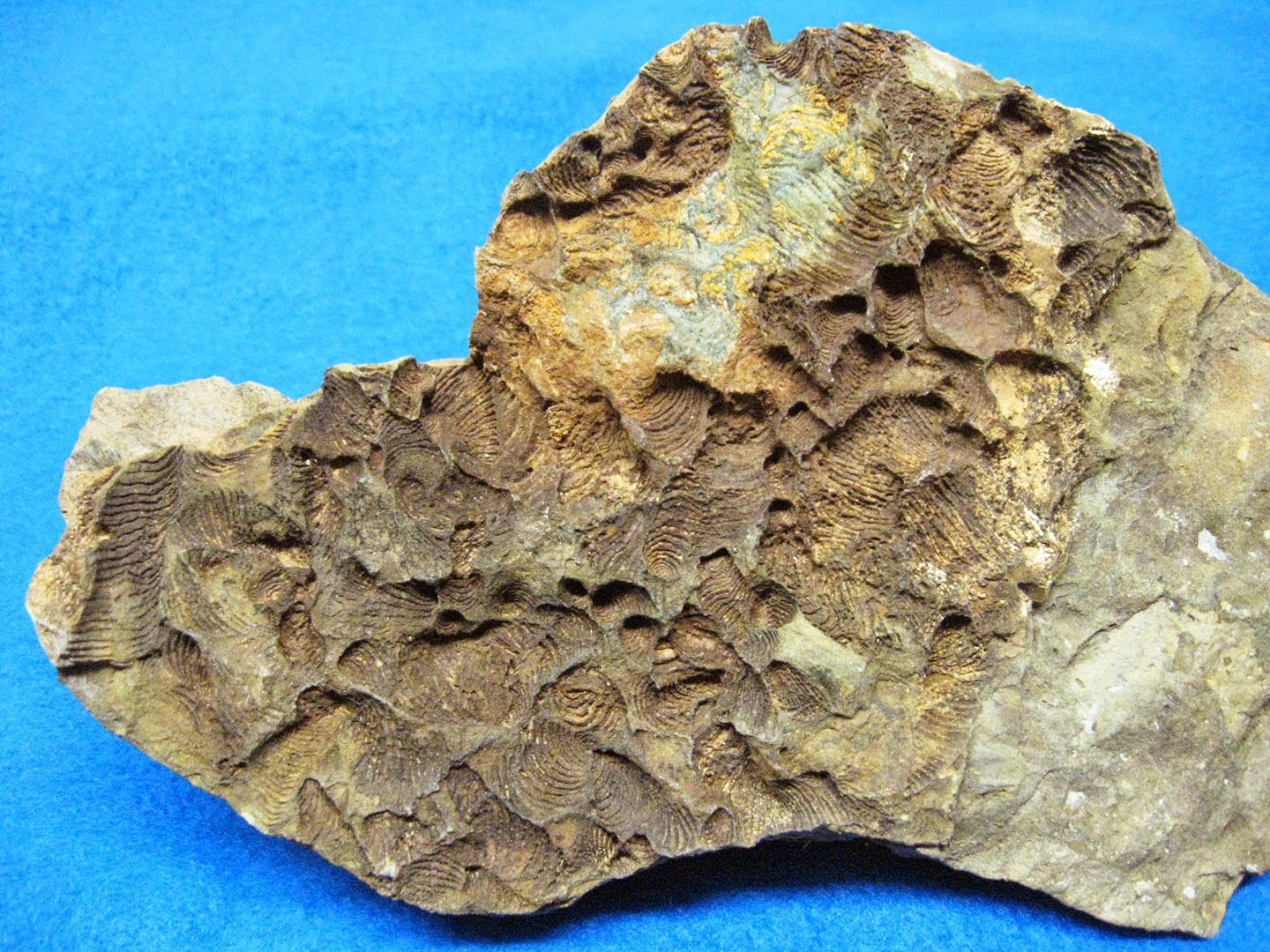 |
Some well preserved specimens have been found that show that belemnites had 10 arms (tentacles). Belemnites were fast-moving nektonic (swimmers) carnivores (meat eaters) that resembled squids. The largest belemnites had a total length of approximately 18 cm. Although some hypothetical reconstructions show flattened "hands" at the end of two of their tentacles (as shown above), some well preserved specimens that actually have impressions of the arms (click HERE) show no "hands" (as shown in the commercially available model below). |
 |
This is the ventral view of the specimen shown above. The ventral groove (function unknown) is well developed. Not all belemnites shells have a ventral groove.
|
 |
This sketch shows the alveole, which is where the phragmocone (the chambered part of the shell) fits into the rostrum.
|








